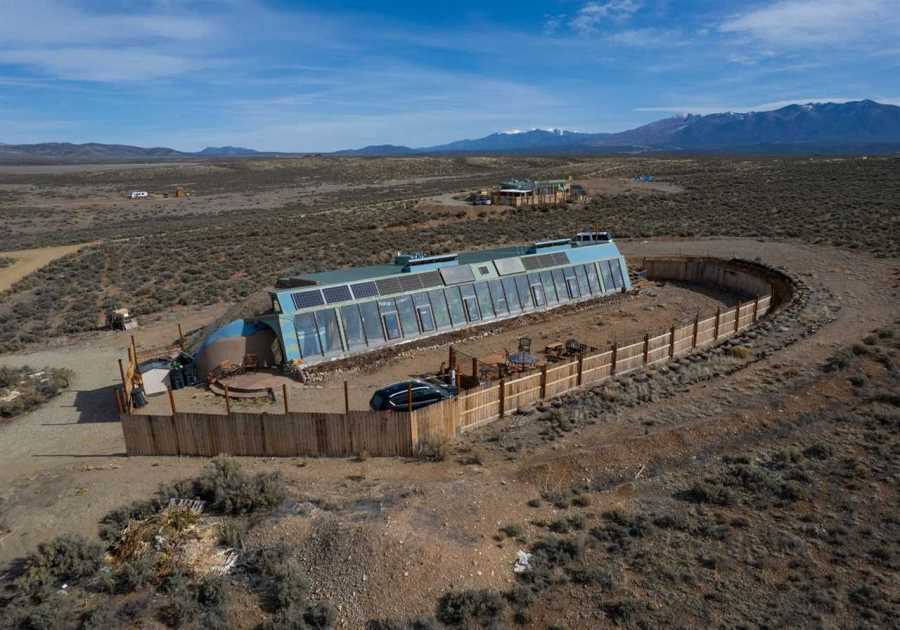NurPhoto/Getty, Tyler Le/BI
Electric vehicles were supposed to be inevitable. Two years ago President Joe Biden climbed behind the wheel of a beefy white electric Hummer to tout his plan to make half of all new cars sold electric by 2030. The following year Congress passed the Inflation Reduction Act, which created a bevy of incentives for drivers to buy electric and for automakers to invest in EVs. That set off a flurry of new projects: EV plants, battery-manufacturing facilities, and mining operations began popping up. By the end of 2022 the situation looked promising: More and more Americans were going electric, and soon everyone would be driving an EV, reducing emissions in the process.
The transition to an all-EV future seemed like a slam dunk. It would not only give the government a highly visible way to show it's fighting the climate crisis but boost the economy through new jobs and investment. But the electric-vehicle takeover has hit some serious roadblocks.
Sure, sales of EVs keep going up — a record 300,000 cars sold in the US in the third quarter of 2023 were electric — but the pace of adoption has markedly slowed, and analysts have suggested the country is no longer on track to hit the government's sales targets. The trickle-down effects of this decreased demand are everywhere. EVs accumulated at dealerships this fall, even as automakers cut prices to try to entice customers. Automakers have backtracked on their promised investments: Ford delayed $12 billion of its planned $15 billion investment in EV manufacturing capacity, while General Motors delayed production of key EV models and scrapped a $5 billion partnership with Honda to make cheaper EVs. Even Tesla — once the superstar of EVs — announced it would delay a planned factory in Mexico. Auto execs who were once trumpeting the potential of electric cars are even publicly acknowledging that EVs aren't working.
Industry analysts have pointed to several reasons for the slowdown, including insufficient charging infrastructure and a lack of affordable EV options. But they're a symptom of the larger problem: America's EV plan was flawed from the start. Instead of seeing EVs as one piece of a plan for more sustainable transportation, America has focused on using EVs as a one-to-one replacement for gas guzzlers. But this one-size-fits-all solution fails to address our broader transportation problems, meaning emissions targets are likely to be missed and other transportation problems will continue to go unaddressed.
"The entire myth at the heart of this whole transition is that the battery car seamlessly fits right into the gas car's position," Edward Niedermeyer, the author of "Ludicrous: The Unvarnished Story of Tesla Motors," told me. "It doesn't, and that's the problem."
The EV myth
The mission to replace gas cars with EVs has led to a series of major miscalculations, one of which has to do with the sheer size of the new electric vehicles being put on the road.
Over the past few decades the American auto industry has become obsessed with huge vehicles. The reasons for the size inflation range from profit margins to distorted government fuel standards, but the proliferation of bigger vehicles created a doom loop of consumer preference: Drivers saw the vehicles around them getting bigger, so they wanted bigger cars to make themselves feel safer. Automakers argued that this was proof that people wanted only big cars, so they cut small models and made existing vehicles bigger, which made people with smaller cars feel less safe — you get the picture. Meanwhile, road deaths and injuries soared, while the larger, less efficient vehicles wiped out environmental benefits from higher emissions standards.
The entire myth at the heart of this whole transition is that the battery car seamlessly fits right into the gas car's position.Edward Niedermeyer
When automakers pivoted to EVs, they focused on the kinds of cars that were already popular — which meant a flood of big electrified SUVs and trucks. But massive-bodied EVs don't make much sense. Larger EVs require bigger batteries, which require more raw materials to manufacture, which requires producers to beef up their environmentally destructive mining operations. While bigger batteries allow drivers to travel farther between charges, they also make the cars heavier, more dangerous, more expensive, and worse for the planet.
The "range anxiety" that has resulted in massive batteries is another reason EVs don't work as a replacement for gas cars. Niedermeyer said that while an electric car can meet most people's driving needs, it struggles with edge cases like road trips because of the need to recharge. Since Americans have been promised a one-to-one substitute for their gas cars, this seems like a failure; an EV should be able to do everything a gas car can. This idea persists even though in 2023 the average US driver traveled only about 40 miles a day, and in 2022 about 93% of US trips were less than 30 miles. Still, in a survey conducted by Ipsos last fall, 73% of respondents indicated they had concerns about EV range.
The focus on increasing EVs' range is contributing to their relatively high prices. Unlike with gas cars, the more you pay for an EV, the more range you can expect to receive. And since Americans have been conditioned to want a lot of range, cars with big batteries and longer ranges have dominated the market, resulting in stubbornly high prices. In September, Cox Automotive pegged the average EV price at $50,683, down 22% from the same time last year. But an analysis from CarGurus found that EV prices were still 28% higher than gas-vehicle prices on average. With prices for everything else — rent, groceries, and other goods — increasing, the average person has less cash to splurge on an expensive electric vehicle.
All of this means there's a natural limit to the number of American households willing and able to make the shift to electric. They've largely been high-income households in places like California, where charging infrastructure is more plentiful. The polling firm Strategic Vision found that EV buyers have a median household income of $186,000. Cox estimated that 8% to 9% of new-vehicle sales in the United States in 2023 would be electric, but getting above that threshold is proving to be more difficult than expected.
The Norway model
If there's any direct inspiration for the United States' EV policy, it's Norway. As the story goes, Norway introduced some compelling subsidies for EVs, sales took off, and now the vehicles virtually dominate the roads. But the reality isn't so simple. And Norway's challenges bode poorly for America's EV push.
Norway shows that if US policymakers stick with the current model of EV transition, it's going to be a difficult road.
Norway introduced EV incentives in the 1990s, then added more when EV technology really took off in the 2010s. EV drivers could get perks like free parking, permission to drive in bus lanes, and, most importantly, exemptions from taxes and fees that could ultimately save them a lot of money. In September, 87% of new-vehicle sales were fully electric vehicles. The problem, Ketan Joshi, a climate-analysis expert in Oslo, told me, is that that stat "doesn't really give you a good picture of the rate of change." Though the new-vehicle sales figure is high, data from Statistics Norway indicates the total share of EVs on Norwegian roads in 2022 was only about 20% — there's still a long way to go until everyone's driving electric.
Even with this shift, Norway isn't on track to meet its 2030 emissions-reduction targets. While emissions from passenger vehicles have fallen slightly, Joshi said, those reductions are being canceled out by an increase in emissions from trucks. People in Norway own more cars than they have in the past, in part because EV incentives encourage people to buy more cars, and the government has no plans to reduce how much people are driving. The researcher Benjamin Sovacool and his colleagues have pointed out that, just like in the US, EV buyers in Norway "tend to be in higher income brackets, often using their EV as a second car."
The Norwegian approach has also had a ton of unintended consequences. Joshi told me that the decline in gas tax revenue due to EV adoption had triggered a contentious political debate about increasing road tolls to make up the difference. (A political party was even formed on the platform of stopping the tolls.) Plus, heavier electric vehicles are harder on roads, produce more air pollution, and pose a greater safety risk for pedestrians.
Norway has made great headway in getting buyers to go for EVs, but it's not a silver bullet, especially on a short timeline. "It shows you the extreme slowness of transition that is basically guided by the rate at which people buy a new car," Joshi said of Norway's approach. Reducing transportation emissions by incentivizing people to replace their car with an EV is incredibly slow. And for countries like the US that got started late, it's a warning sign.
Norway shows that if US policymakers stick with the current model of EV transition, it's going to be a difficult road. Even if adoption keeps ticking up, it will take a long time to get existing internal-combustion-engine vehicles off the road and see a notable decline in transport emissions. Plus, there will be other issues to deal with like increased road maintenance and pedestrian safety.
"Narrow success in one area is not something you necessarily want to emulate," Joshi said.
Time for a rethink
The shift from gas-powered cars to electric vehicles is an opportunity to rethink how Americans get from place to place. But so far the US government, carmakers, and consumers have been pursuing a small-minded swap that lacks the necessary ambition.
Getting Americans to ditch driving altogether would be the most effective way to reduce emissions, but it would require a massive rethink of our transport system. Something like that doesn't happen overnight, and given the decadeslong lack of investment in anything other than car infrastructure, there are plenty of other opportunities for a better future. If the government and automakers are serious about making transportation more sustainable, they should be incentivizing smaller vehicles, hybrid cars, and public transportation like trains and buses.
EVs can be an important part of the fight against the climate crisis, but America's EV plan needs to lean into what these cars do well: short daily trips that can be taken in small, affordable cars. People who frequently take long trips can take advantage of hybrid cars. And better public transit and faster intercity trains could make a huge difference for people and the planet.
While it may be a sexy and industry-friendly approach to the climate crisis, an EV-first plan isn't the most effective way to tackle the enormous challenge we face.
Paris Marx is a tech writer and host of the Tech Won't Save Us podcast. He also writes the Disconnect newsletter and is the author of Road to Nowhere: What Silicon Valley Gets Wrong about the Future of Transportation.
Read More
By: [email protected] (Paris Marx)
Title: The march towards an all-EV future hit a major roadblock. What went wrong?
Sourced From: www.businessinsider.com/electric-car-ev-sales-prices-problem-transportation-2024-1
Published Date: Wed, 03 Jan 2024 10:46:01 +0000
.png)





